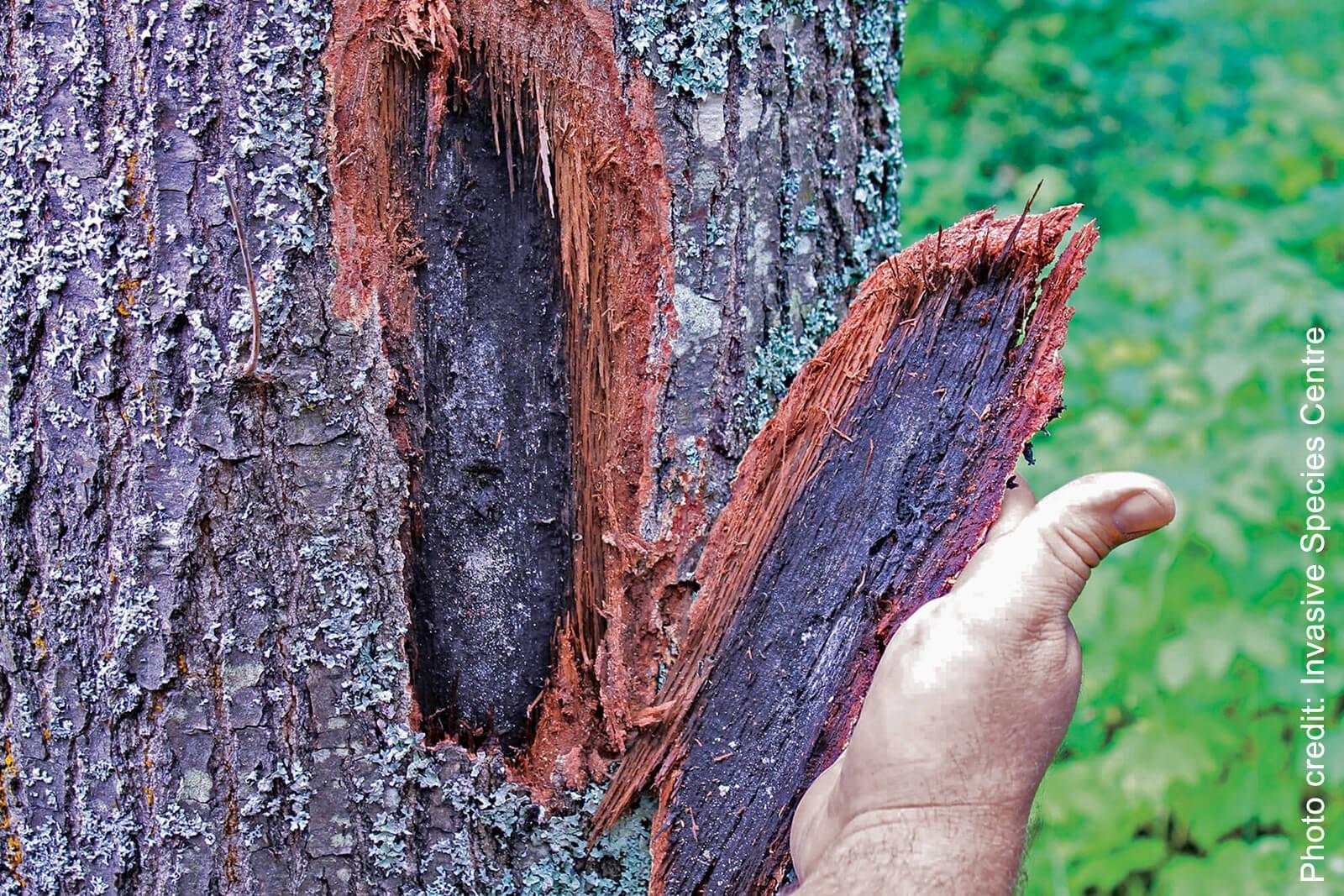July 14, 2023

First Canadian detection of oak wilt found in Niagara
With files from Jenny Liu, OMAFRA
The Canadian Food Inspection Agency (CFIA) recently confirmed the first detection of oak wilt rot in Canada.
Oak wilt rot is a serious disease of oak trees caused by the fungus Bretziella fagacearum which grows on the outer sapwood of all oak trees. The origin of the fungus is currently unknown, and although it has varying degrees of severity across the different species of oak, it appears red, black and pin oaks are most susceptible.
The initial case in Canada was found in a residential area of Niagara Falls, Ont. CFIA has implemented movement restrictions on the affected properties in order to help prevent the spread of the fungus that can kill a tree in just one season. CFIA is working with other federal, provincial and municipal governments to survey the area and determine next steps.
A vascular disease, oak wilt can spread from roots to the top of the tree through its vessels to restrict water and nutrient flow. Affected red oaks are often identified with the disease through their pointed lobes. White and bur oaks can be identified by their rounded lobes. Leaf bronzing at the top of the tree, sudden wilt of a healthy tree, premature shedding of leaves in spring, summer or early fall, and vertical cracks in trunk bark caused by fungal mats are all signs a tree is likely infected.
In addition to the movement of affected wood (ie: firewood), 90 per cent of oak wilt is spread via interconnected roots of nearby trees. Wounded trees (including those harvested or pruned) release a sap that attracts sap beetles and picnic beetles, who then transport the spores to healthy trees.
Thus, members of the landscape horticulture community are asked to avoid harvesting or pruning oak trees from April to August and to be on the lookout for affected trees. All possible sightings should be reported immediately to either the Invasive Species Centre (via their website or at 1-800-563-7711), CFIA, or by using the EDDMapS app.
The Canadian Food Inspection Agency (CFIA) recently confirmed the first detection of oak wilt rot in Canada.
Oak wilt rot is a serious disease of oak trees caused by the fungus Bretziella fagacearum which grows on the outer sapwood of all oak trees. The origin of the fungus is currently unknown, and although it has varying degrees of severity across the different species of oak, it appears red, black and pin oaks are most susceptible.
The initial case in Canada was found in a residential area of Niagara Falls, Ont. CFIA has implemented movement restrictions on the affected properties in order to help prevent the spread of the fungus that can kill a tree in just one season. CFIA is working with other federal, provincial and municipal governments to survey the area and determine next steps.
A vascular disease, oak wilt can spread from roots to the top of the tree through its vessels to restrict water and nutrient flow. Affected red oaks are often identified with the disease through their pointed lobes. White and bur oaks can be identified by their rounded lobes. Leaf bronzing at the top of the tree, sudden wilt of a healthy tree, premature shedding of leaves in spring, summer or early fall, and vertical cracks in trunk bark caused by fungal mats are all signs a tree is likely infected.
In addition to the movement of affected wood (ie: firewood), 90 per cent of oak wilt is spread via interconnected roots of nearby trees. Wounded trees (including those harvested or pruned) release a sap that attracts sap beetles and picnic beetles, who then transport the spores to healthy trees.
Thus, members of the landscape horticulture community are asked to avoid harvesting or pruning oak trees from April to August and to be on the lookout for affected trees. All possible sightings should be reported immediately to either the Invasive Species Centre (via their website or at 1-800-563-7711), CFIA, or by using the EDDMapS app.